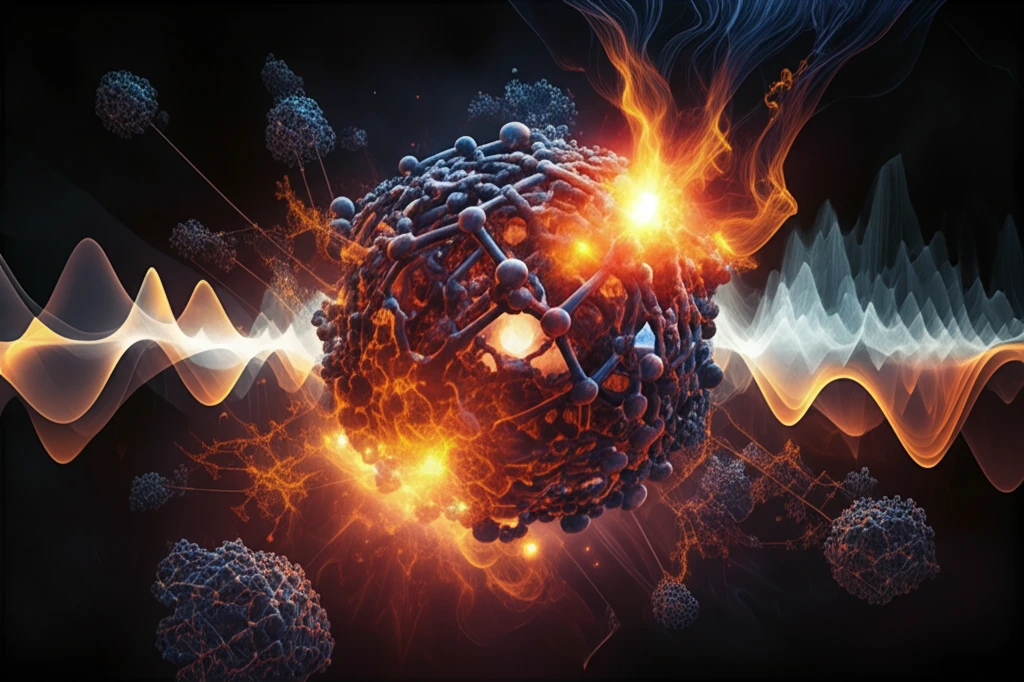
Combustion Chemistry: Unveiling the Secrets of High-Temperature Reactions
"A Deep Dive into the Anharmonic Effect on CH3SCH2OO System Rate Constants"
Combustion chemistry is a fascinating and complex field, crucial for understanding everything from engine performance to atmospheric processes. At the heart of this field lie chemical reactions that occur at high temperatures, where molecules behave in unexpected ways. One such area of interest is the study of the CH3SCH2OO system, a molecule that plays a significant role in the oxidation of dimethyl sulfide – a compound originating from marine environments.
The journey of dimethyl sulfide (CH3SCH3) through the atmosphere involves its transformation into sulfuric acid and methanesulfonic acid via a series of reactions. Understanding these reactions is essential for predicting air quality and climate change impacts. The initial step in this transformation is the reaction of CH3SCH3 with hydroxyl (OH) radicals, leading to the formation of CH3SCH2, which then rapidly combines with oxygen (O2) to create CH3SCH2OO (methyl-thiol-methyl peroxy radical).
In typical atmospheric conditions, CH3SCH2OO reacts with molecules like nitric oxide (NO), hydroperoxyl (HO2), and other peroxy radicals (RO2). However, when these compounds are scarce, an interesting phenomenon occurs: an intramolecular hydrogen shift within the CH3SCH2OO radical. This shift leads to the formation of CH2SCH2OOH, which subsequently breaks down into various products. This process is particularly important at high temperatures, making it relevant to combustion environments.
What is the Anharmonic Effect and Why Does It Matter?

The anharmonic effect refers to the deviation of molecular vibrations from the idealized harmonic oscillator model. In simpler terms, it means that the vibrations of atoms within a molecule are not perfectly symmetrical, and their behavior changes as they reach higher energy levels. This effect becomes increasingly important at high temperatures, where molecules possess more energy and their vibrations become more pronounced.
- Accurate Modeling: Ignoring anharmonicity can lead to inaccurate predictions of reaction rates, especially at high temperatures.
- Combustion Efficiency: Understanding these effects helps in optimizing combustion processes for better efficiency and reduced emissions.
- Pollutant Formation: Anharmonic effects can influence the formation of pollutants during combustion, impacting air quality.
The Future of Combustion Research
The study of anharmonic effects in combustion chemistry is an ongoing endeavor. Future research will likely focus on refining computational methods, exploring larger and more complex reaction systems, and validating theoretical predictions with experimental data. By incorporating these effects into combustion models, scientists can develop a more accurate and comprehensive understanding of high-temperature chemical processes.
